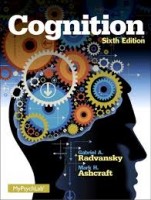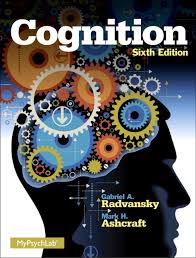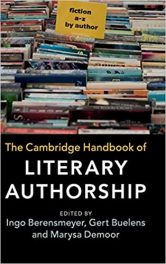 Authors: Gabriel A. Radvansky and Mark H. Ashcraft
Authors: Gabriel A. Radvansky and Mark H. Ashcraft
Publisher: Pearson (www.pearsonhighered.com) – 492 pages
Book Review by: Sonu Chandiram
The authors desired to make this textbook interesting and useful to students, instead of boring, because they write that (contrary to popular opinion) “the psychology of human memory and cognition is fascinating.”
They express in strong terms that the study of cognition, which deals with questions and ideas, is inherently interesting. It is about how we think, reason, remember, and use language, to name a few topics under the umbrella of cognition. So why should it be boring, they seem to ask.
Radvansky and Ashcraft point out that when cognitive psychologists “talk research” at conventions, they are “agitated, intense, and full of energy.” In contrast to this, they point out that (based on speaking to students) undergraduate texts are “dull, too concerned with the minutiae of experimental method and technical jargon and not concerned with the interesting issues.”
Expressing their desire to students that they want them to understand the material in this book, and even to “appreciate cognitive psychology as one of the most interesting and memorable topics of your student career,” they have added these features to this book:
- Examples of main points are sprinkled throughout the book, and each of the chapters has a box that asks you to Prove It.
- Critical terms are boldfaced in the text and defined immediately in italicized print.
- A Section Summary is provided at the end of each major section in a chapter. This will help you check your understanding and memory as you study.
- A more colloquial style of language is used in the book, using the first person, and asking questions directly of you, inserting a parenthetical commentary, and other items
- This book is written in a manner to be useful not only for those intending to go into cognitive science but also for those preparing for careers outside this field.
What is covered in this book? Below are the titles of its chapters, to provide you a glance:
- Cognitive Psychology: An Introduction
- Cognitive Neuroscience and Cognitive Science
- Sensation and Perception
- Attention
- Short-Term Working Memory
- Learning and Remembering
- Knowing
- Using Knowledge in the Real World
- Language
- Comprehension: Written and Spoken Language
- Decisions, Judgment, and Reasoning
- Problem Solving
- Cognition and Emotion
- Cognitive Development (Online Chapter)
How are chapters laid out in terms of organization and presentation of material? Let’s take a look at one of the inside chapters to see what we find: Knowing (chapter 7)
At the top of its first page, five bullet points are presented, with several subtopics within each:
- Semantic Memory
- Connectionism and the Brain
- Semantic Priming
- Schemata and Scripts
- Concepts and Categorization
A quote on the chapter subject by an expert (taken from his-her article or book) is provided just below the bullet points. In this chapter this is the quote:
Semantic memory is the memory necessary for the use of language. It is a mental thesaurus, organized knowledge a person possesses about words and other verbal symbols, their meaning and referents, about relations among them, and about rules, formulas, and algorithms for the manipulation of these symbols, concepts, and relations
(Tulving, 1972, p. 386)
Each of the bulleted topics is discussed through the chapter, with study aids provided such as: charts, figures, photos, section summaries, tables, and other items to facilitate comprehension and retention. At the end of the chapter, as with all chapters in this book is a list of Key Terms.
The authors have produced an excellent work that’s user-friendly and accessible. Cognition is a pleasure to read and study!
Authors
Gabriel A. Radvansky is affiliated with the University of Notre Dame.
Mark H Ashcraft is affiliated with the University of Nevada in Las Vegas.





